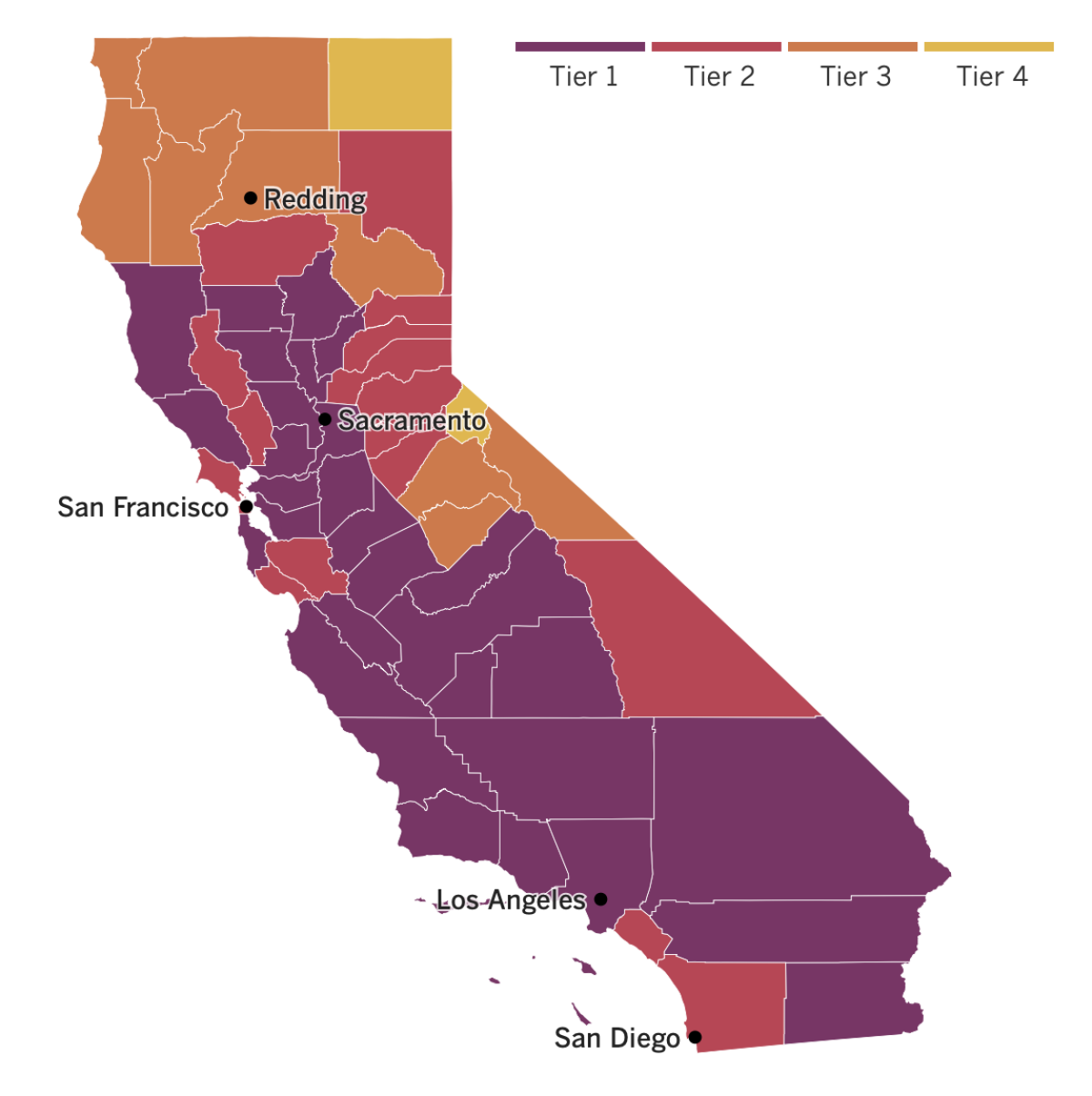Commentary: Sacramento’s COVID-19 monitoring system needs to allow for local control

- Share via
Late last month, Gov. Gavin Newsom ordered the state’s county monitoring list” to be replaced with a new set of four color-coded tiers through which counties would move based off their positivity rates and cases per 100,000. Initially, this was viewed as a better way of assessing each county’s COVID-19 metrics as opposed to being either on or off the largely ineffective monitoring list. A county would move from a more restrictive to a less restrictive tier as its positivity rates and cases of the coronavirus per 100,000 decreased or to a more restrictive tier if they increased.
However, shortly after this was introduced, the state slapped on a third category. The “adjusted case rate for tier assignment” is adjusted based on the state’s median testing volume. This means that local jurisdictions like Orange County are beholden to the state’s whims and are only allowed to progress into the next tier as long as the state’s metrics go down along with the other two categories. This ties counties that are more rural or suburban that have lower case and positivity rates with urban counties like Los Angeles that are keeping the state median higher.
Why should counties that are getting better each week be forced to keep portions of their economy closed simply because another county (in many cases not even geographically close to theirs) is causing the state testing rate median to remain higher? This illogical and unfair blanket treatment of counties is causing more harm than good, resulting in outcry from our community and businesses.
The state also doesn’t allow for counties to have enough wiggle room with the range between tiers and could have them constantly jumping back and forth because of an algorithm set by the state reflecting a testing-rate median. This is especially true for the yellow “minimal” category, in which the range between it and the orange tier are extremely tight. Throwing the third “adjusted case rate” factor in, a county could literally be cast back into the orange category through no fault of its own but as a result of the state median increasing. This places a huge burden on businesses that our communities and families rely on. Forcing them to open and close back and forth is devastating for the economic viability of our communities.
Gov. Newsom tells us there is no green tier because we are “not expected to return to a pre-pandemic mindset anytime soon.” Alpine County’s positivity rates and cases per 100,000 are both at zero. According to the CDC’s coronavirus data tracker website, the county has had fewer than 20 cases throughout the entire pandemic. Yet, it remains in the yellow minimal category, simply because it can’t go any further on the state’s tier system. Mariposa and Modoc counties, also in the yellow tier, have very low positivity and case rates. Should their business sectors continue to be shuttered despite the risk factor being extremely low or in Alpine’s case, virtually nonexistent?
California is a huge state, larger than many countries. Not all regions are the same. Counties have different densities, demographics and climates that factor into how the virus affects them. Tying them to a state median neglects this fact and punishes counties that are performing well with their COVID-19 response. We want to work with the state on beating COVID-19 and flattening the curve because we’re in this fight together, but giving counties more local control over our responses is absolutely necessary. We have the ability to protect public health and reopen our economies simultaneously, and giving more local control to counties is not only logical but the right thing to do.
Michelle Steel is the chairwoman for the Orange County Board of Supervisors.
All the latest on Orange County from Orange County.
Get our free TimesOC newsletter.
You may occasionally receive promotional content from the Daily Pilot.



